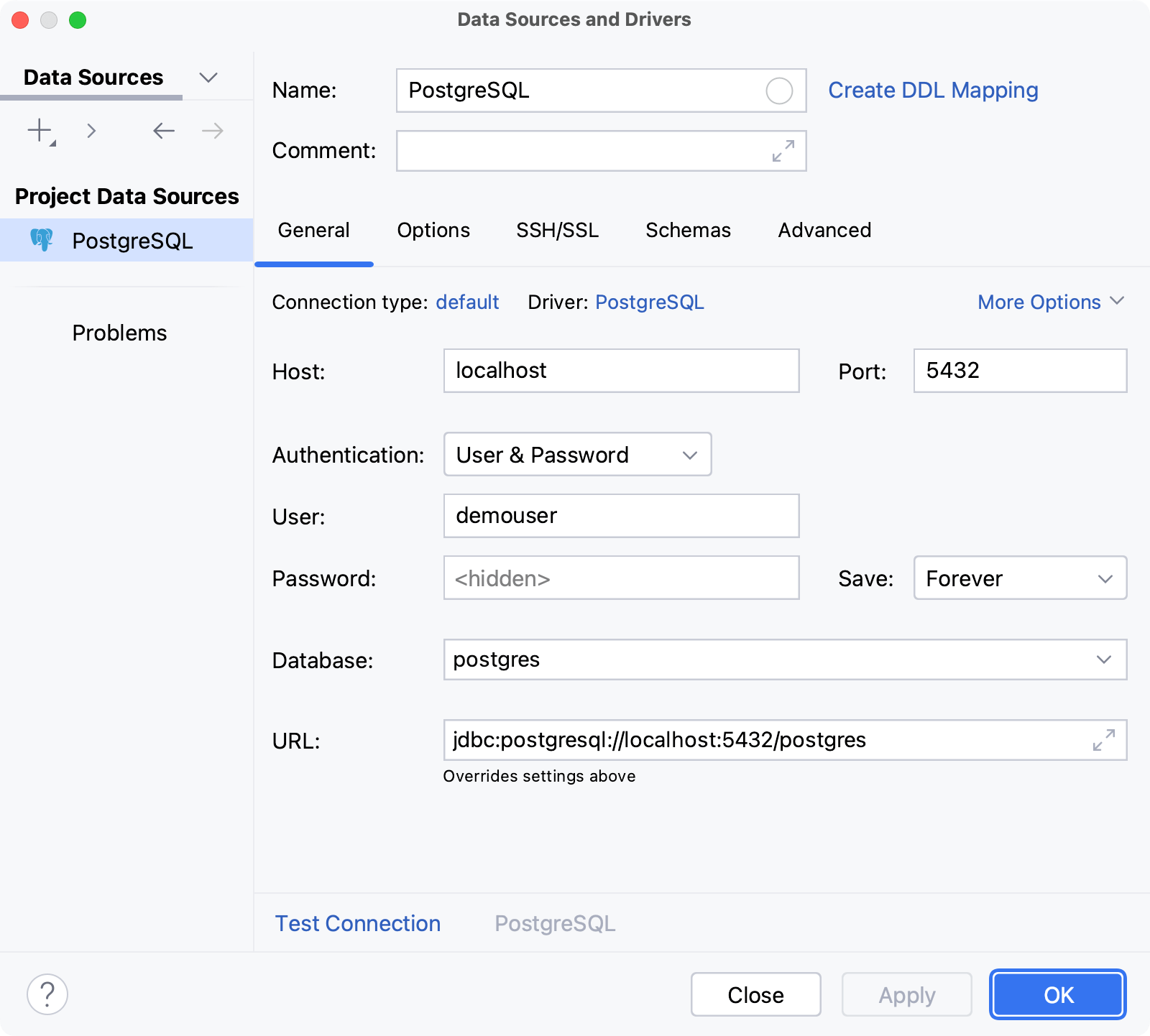Connection to a database
note
You need to create and open a project from the Welcome Screen. Only after that you will see the DataGrip interface and will be able to create connections.
This topic gives you an overview of how the connection to a database works in DataGrip. For more information about features and concepts, refer to the dedicated topics.
To connect to a database, DataGrip requires connection details (for example, host, port, password, SSH configuration settings, and so on). For every database, the connection details are stored in a dedicated connection configuration — data source.
Below is an example of the PostgreSQL data source settings in the Data Sources and Drivers dialog () . For information about dialog fields, refer to the dialog reference topic and data source creation instructions.

For a data source, connections to the database are established in special wrappers – sessions. Each session is a wrapper over a single connection, and it stores the connection's information (for example, whether it is active or not, transaction control mode, and other settings).
tip
On startup, DataGrip does not establish connections to databases but loads the cached data. If you have large databases in your project, and it affects the IDE loading time, consider having your databases in multiple projects.
Sessions can have clients – files, whose queries are sent by using the connection that the session holds. Data editor can also be a client for a session.
Depending on the way you create a new session, it can be connected either automatically or after a certain action. The green dot in the corner of a session's icon indicates the connected status.
You can create a new session by doing either of the following:
Open a query console, view database object's data in data editor, or attach an SQL file to a data source.
As a result, under the data source node in the Services tool window, the new session node appears with a client node under it.
For a query console, the session will be connected once you perform an action that requires interaction with the database. For example, once you run a query.
For a table, the session is connected automatically, as DataGrip requires an active connection to request the table data from the database, receive it, and display it in the data editor.
For an SQL file, the session is connected automatically. To run queries against either of the data source databases or schemas, you have to attach your file to them by selecting them in the <schema> list.
Perform an action that requires interaction with the database. For example, run a stored procedure or run a script by using run configurations.
As a result, the new connected session node appears under the data source node in the Services tool window.